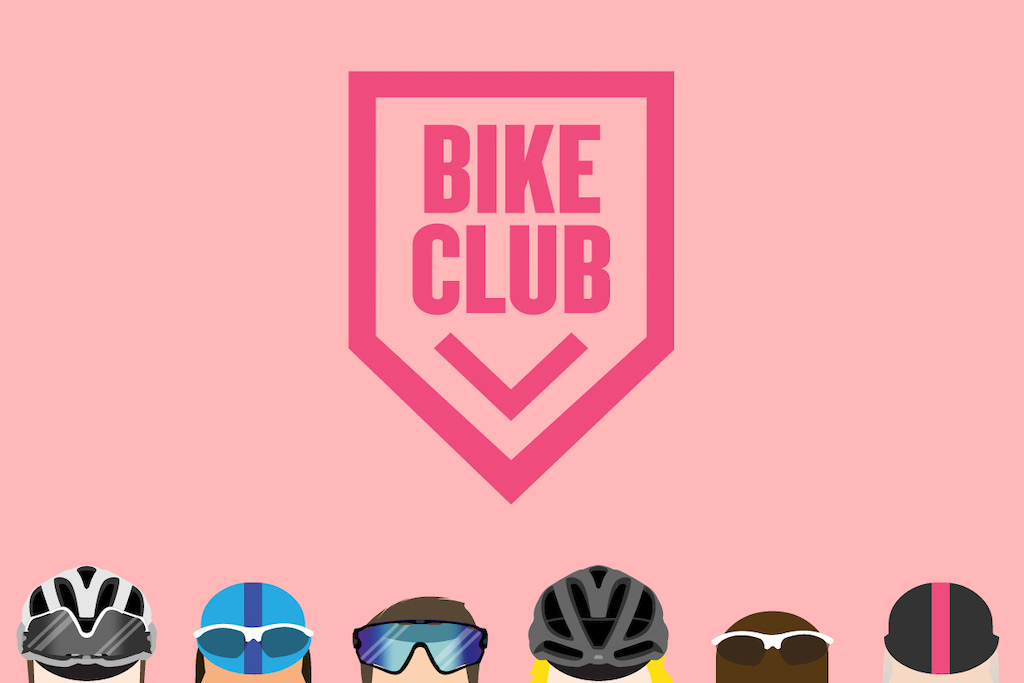16/11/2021 NFT Trading Has Officially Infiltrated Cycling

While it might be a stretch to say that the world is getting brighter and better, we can definitively argue that it just keeps getting more... interesting.
Today, in yet another turn of events, the bike world has outdone evenHenry Quinneyin coming up with the farfetched and fantastical. A motley crew has come together to create this project: of an artist with the snappy sobriquet Rich Mitch, who is in charge of creating the avatars that will be sold as NFTs; a retired bike racer, current crypto enthusiast, and 'sockologist' known as Scoop, who seems to be the logistics guy; a '90s road pro and OG mountain bike racer called Wolf who is described as the operation's soigneur; and the founder of one our competitor websites, whom we'll call Tyler, the communicator.
As for the operation itself? It's the world's first blockchain-based cycling community.
Here's how it will work. People - that's you, I guess (?) - will buy into this community by purchasing non-fungible tokens (NFTs), which are essentially collectibles in the form of unique pieces of code that symbolize ownership of digital assets. That's right, you're buying some code that represents authenticity and scarcity that is associated with a picture on the internet, kind of like how you can technicallybuy a starthat you will never visit (or remember where to find) for $34.90 or buy a pair of stars as a useless honeymoon gift for $69.90. Nice.
This cycling NFT project, called Bike Club, will mint 10,000 unique rider avatars that will be sold as NFTs. Owning a so-called Rider grants access to the Club.
A quick glossary:
NFT (non-fungible token):A unique unit of code that represents ownership of an asset traded on the blockchain
Blockchain:A digital ledger that records transactions
NFT minting:The process by which an asset is published on the blockchain and made tradeable
Confusion:A feeling with which I am familiar
Anyway, when one purchases a digital cycling avatar and thus technically owns the image, the transaction is recorded online on the Ethereum blockchain, a digital ledger that tracks who owns what non-thing things. Because minting an NFT is a way of authenticating that asset and ensuring that there isone true owner, thewhole NFT situationcreates artificial scarcity, thereby making these collectible avatars desirable and at least somewhat valuable.
But wait. While buying an NFT to own the certified version of an image and get your user ID in a public ledger somewhere on the internet seems like an adventure in hubristic self-congratulations, we do sincerely have to give the project some credit in that it will tangibly benefit bike communities. Bike Club NFT has pledged to donate 10% of all royalties and revenues to organizations and people that improve biking locally and on large scales. The club will draw upon its members to steer the club's charitable initiatives. (It seems too direct to suggest simply donating the money you'd spend on avatar ownership to the charitable organization of your choice.)
For those who would prefer to focus on the personal benefits of owning an NFT avatar, Bike Club membership will also include access to VIP areas at bike industry events; access to a private Strava club; deals and opportunities to spend IRL cold, hard cash on products from partner brands; and membership in a private Twitter group and the club's Discord server - think Slack, but for after-hours. The whole thing is challenging my understanding of what a bicycling clubdoes. There must be a part where one... rides a bicycle? But maybe I'm just missing the point.
Bike Club will begin minting NFTs in January 2022 for Stage 1. Once 20% of the avatars are sold, Bike Club plans to make its first charitable donation of $40,000 USD, eventually making five $40,000 USD donations by the time they all sell. Once Bike Club enters Stage 2, it'll mint a series of mountain biker avatars (the first ones will be roadies). Around the same time, mysterious hidden features and special powers will be announced pertaining to the original Riders. It's unclear what exactly that means, but Bike Club suggests that it might be beneficial to own multiple Riders - a whole team, even - because not all Riders have the same secret skills. The charitable donations will continue in Stage 2.
These normal and understandable happenings will continue into Stage 3, when Bike Club hints it may start its own cryptocurrency and / or pursue some type of gamification in the Metaverse and / or form a DAO, or a decentralized autonomous organization. A DAO is a cryptocurrency-driven, user-governed community. What could happen from there? I'm not convinced even the sky is a limit at this point.

Some example avatars.
While this seems like it'll be the largest-scale NFT project in cycling so far, it's not the first. The first cycling NFT was a digital rendering of a one-offColnago C64, which sold earlier this year for $8,592 USD, which happens to be $2,300 USD more than the price of an actual, rideable, Colnago C64. The bike depicted in the image never actually existed in the physical world, but in theory, Colnago said it would be the lightest frameset in the company's history. If it existed. Which it doesn't and never will. Note that it's not an image of the bike itself that was sold, but the right to call oneself theownerof the image. As for the image itself?
There she is, just twirling around, ready to be admired by literally any of us who decide to look at it, but owned solely by someone called User MTD-01.
The next NFT that's made headlines in the cycling world was also sold earlier this year. Our sister site CyclingTipscovered the story, in which the Tour de France team Bahrain Victorious unveiled and then destroyed its new team kit. The jerseys, which some assumed the team would, uh, wear, were destroyed shortly after the presentation ceremony, but a digital image of one was minted and auctioned off as an NFT for roughly $400 USD. (It's worth mentioning that the money was donated to the Royal Humanitarian Foundation, which sounds nice until you learn that the RHFis chaired bythe very same Sheikh Nasser bin Hamad Al Khalifa that a.) launched Team Bahrain Victorious and b.) has beenaccused of egregious human rights violationswhen he tortured dissidents during Bahrain's 2011 pro-democracy political uprising.)
All of that is to say that this Bike Club NFT project is a big step in, well, a direction. I'm not sure which direction, but lord, I cannot wait to find out.
I'll acknowledge that I'm cynical about it, and maybe I'm just old-fashioned and NFTs do have more merit than I like to admit. The idea of staking claim on images that have no physical existence or use isn't all that different from, like, things we care a lot about that do have actual implications for our daily lives, so there's likely something to this whole blockchain thing. If enough people collectively give something meaning, then it could be the most important thing in the world. Money? That exists only by human agreement. Words are just symbolic scribbles and sounds. Time? Social construct. F*ck it, nothing is real and this is all just a fever dream, right? Let's go biking while biking is still part of biking.
 (0)
(0)
 (0)
(0)
https://www.pinkbike.com/news/nft-trading-has-officially-infiltrated-cycling.html
